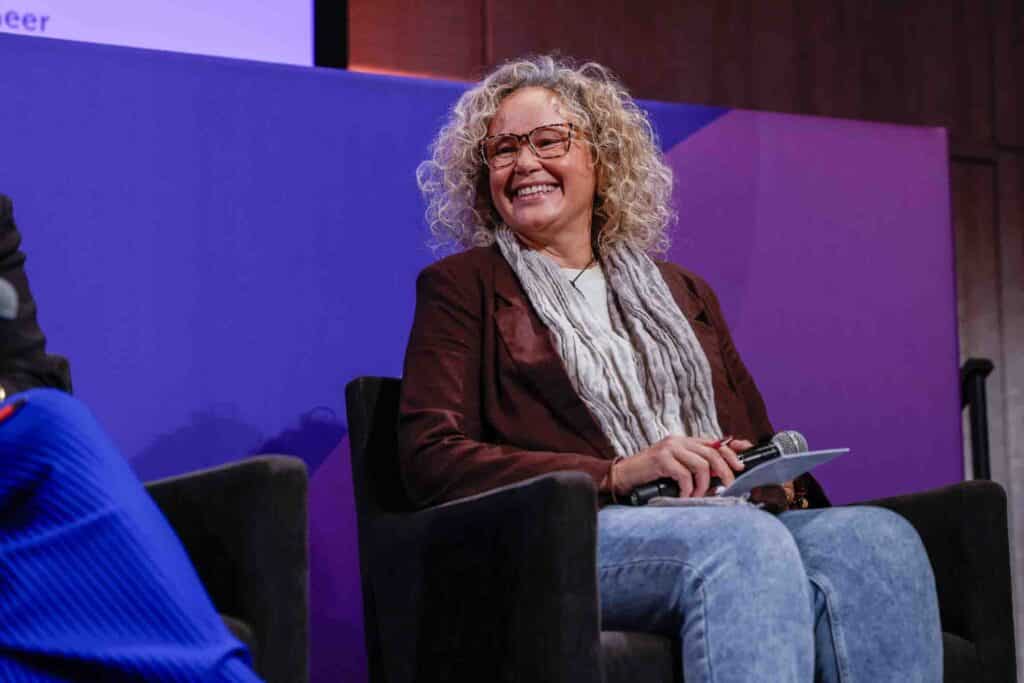Amid the national crisis of men’s violence against women, news coverage surrounding the issue can heavily influence public understanding.
The Chair of Our Watch, Moo Baulch has seen an immense amount of change surrounding this public conversation within the last decade and says “the Australian media has been a critical part of that change”.
Our Watch is a national leader in the primary prevention of violence against women and their children in Australia, and Baulch plays a big role in advising news media on responsible reporting.
Speaking at Women in Media’s National Conference on Friday, she explained that “it’s vitally important” for media to be getting domestic violence incidents on the front page – or digital equivalent– as long as “we’re telling those stories in a way that is respecting the dignity of victim-survivors”.
“We are telling the stories of ourselves, we’re telling the stories of our mothers and our grandmothers and our sisters and the people around us,” Baulch said.
“If we can tell those stories in a way that is sensitive to those experiences, and is growing the conversation around the impacts of violence, and recognising that we can shift public opinion on this in the same way that we’ve shifted opinion on other public health issues, then that, for me, means we are getting somewhere.”

Minister for Social Services Amanda Rishworth also added to the conversation, saying she welcomes the focus on bringing these stories to life, as long as the complexity and different experiences of women are being reflected.
“In some ways, the message [on crisis], and all of that a lack of hope, can actually work against [women],” Rishworth said, noting that balance within reporting is important.
“Of course, [a journalists’] job is to hold governments to account– I would never back away from showing systems that aren’t working– but I think how we tell those stories and the diversity of those stories and experiences is equally important.”
This is particularly true when it comes to the issue of coercive control, which can often be viewed as less overt form of domestic violence. Rishworth believes that coercive control can and should be a sufficient basis for a compelling story, considering that “if we we don’t tell those stories, we are not going to [add to] the public consciousness of how important it is to intervene early or prevent [coercive control] from occurring in the first place”.

Acclaimed screen creator Leah Purcell AM has been telling these kinds of stories and ensuring the truth of domestic violence makes an impact on people’s consciousness. When it comes to the reason why she chooses to put domestic violence stories within her work, Purcell told the conference that “it comes from my truth”.
“It’s a base that I can build from, and even though it’s fiction, it comes from a place of personal truth,” she said.
“Being an actor, you learn that when you’re on stage, you’re not just performing, you’re actually understanding and reading your audience. So through my theatre, I knew that I was making a difference.”
Purcell noted that she receives many faxes from women telling her how much they appreciate the honesty and bravery that comes through her storytelling.

And at one of her shows, Purcell said there was a woman who had decided to leave her abusive relationship even before leaving the theatre.
“So that spurred me on to know that art is important. You can say that it’s fictional, to make people feel more comfortable, but I wanted to put that on stage,” she said.
“I wanted those scenes to be as raw as they can be.”

